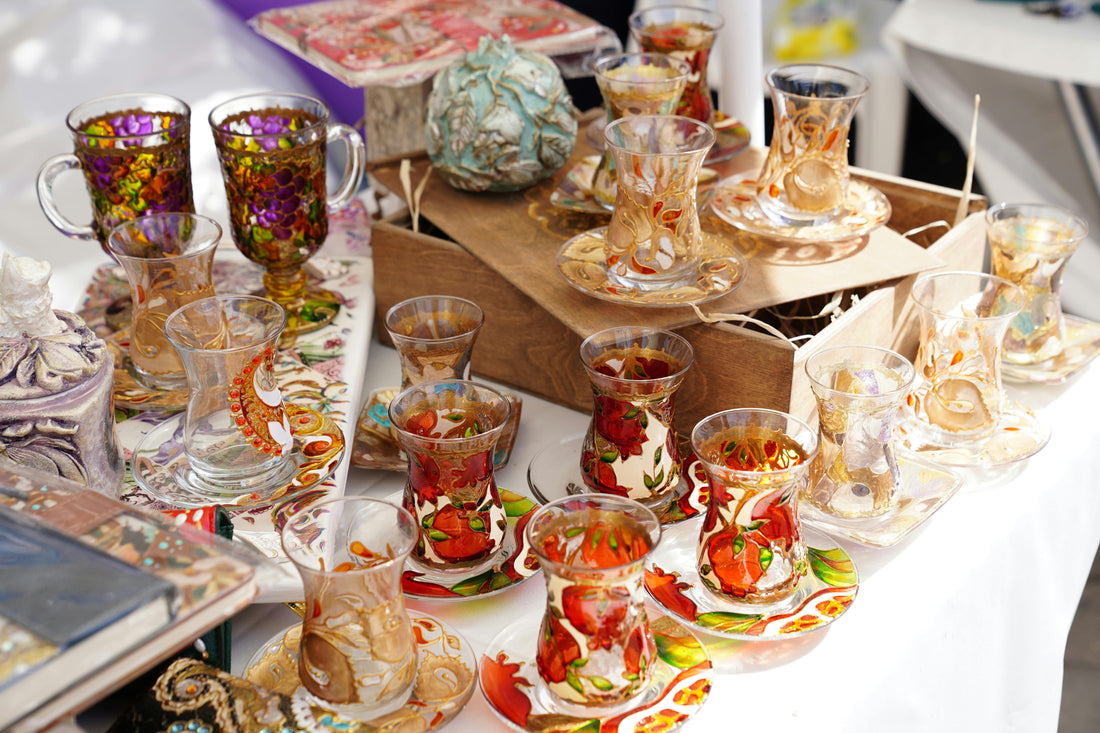“I used to think all honey tasted the same—just sweet and simple. But that changed on a quiet afternoon when I stirred a spoonful of Apple Orchard honey from Honey and Greens into my cup of Earl Grey. The flavor took me by surprise. It was light, crisp, with a hint of tart apple that danced beautifully with the citrusy bergamot in the tea. It felt less like adding sweetener, and more like discovering a whole new layer of flavour. Since then, I’ve never looked at honey—or tea—the same way.”
What Is Honey, Really?
Honey isn’t made from pollen—it’s made from nectar collected by bees. Through a process involving enzymes, regurgitation, and evaporation, bees break down complex sugars in the nectar into simple sugars like fructose and glucose, giving honey its sweet taste. The final product is stored in the hive’s honeycomb, where bees fan it with their wings to reduce moisture and thicken it.
Raw vs. Processed Honey: Health Benefits
Honey has long been valued for more than just sweetness. Studies show it may have antioxidant, antimicrobial, and anti-inflammatory effects. People use it to soothe sore throats, improve oral health, and even boost energy when mixed with lemon and tea. While raw honey may contain traces of pollen, it’s not what gives honey its health benefits. In fact, the nutrient content remains mostly the same whether honey is raw or lightly processed. However, for medicinal use, minimizing heat exposure is ideal to preserve certain natural compounds like hydrogen peroxide.
Why Honey Tastes Different
Honey’s flavor depends on three main things:
• Nectar source: The flowers bees visit influence the taste—e.g., clover honey is mild, while buckwheat is bold and dark.
• Region and climate: Soil, weather, and seasons shape the honey’s aroma and texture.
• Processing method: Raw honey has a more complex, layered flavor, while processed honey tends to be smoother and more uniform.
Once you begin to notice these differences, you’ll realize that honey can add flavor—not just sweetness—to your tea
From Hive to Teacup: How Honey Transforms Your Brew
Now that you understand how honey’s flavor can range from floral and fruity to bold and earthy, it’s clear that it does more than just add sweetness—it enhances and reshapes the taste of your tea. The right honey can highlight subtle notes in a light green tea or deepen the richness of a strong black tea. The wrong one, though, might throw the whole cup off balance.
So, how do you get it right? Let’s dive into which honeys pair best with which teas—so every sip feels intentional, harmonious, and full of flavor.
1. Honey and Black Tea: Bold Flavors, Beautiful Balance
Black tea’s rich, full-bodied character makes it a perfect partner for flavorful honeys. With varieties like Earl Grey, English Breakfast, and Assam, the right honey can enhance the tea’s depth—or introduce a new, exciting twist.
Take Earl Grey, for example. Its citrusy bergamot notes pair beautifully with Apple Orchard Honey from Honey and Greens. The honey’s gentle fruitiness lifts the bright citrus tones while adding a crisp, rounded sweetness.
For stronger black teas like English Breakfast, reach for something more intense. Matcha Honey brings a unique earthiness that stands up to the tea’s malty strength while adding a subtle green tea undertone, creating a layered and deeply satisfying brew.
2. Honey and Jasmine Tea: A Fragrant Floral Fusion
Jasmine Dragon Pearls is a delicate green tea hand-rolled into pearls and naturally scented with jasmine blossoms, creating a beautifully aromatic brew. Its soft, floral character pairs best with a honey that enhances those fragrant notes without overpowering them.
Spanish Lavender Honey from Honey and Greens is a perfect match. Its light floral sweetness complements the jasmine aroma, adding a smooth, elegant layer of flavor that lingers gently on the palate.
3. Honey and Herbal or Flavored Teas: A Creative Blend
Herbal and flavored teas offer a wide canvas for experimenting with unique honey pairings. This is where you can really get playful.
Try adding Cinnamon Honey or Ginger Honey from Honey and Greens to your favorite fruit-infused or spiced herbal teas. Cinnamon Honey brings a warm, sweet spice that beautifully complements apple, chai, or rooibos blends, while Ginger Honey adds a zesty kick to lemon, mint, or berry teas.
4. Honey and Green Tea: Light Flavors, Thoughtful Pairings
Green teas are known for their mild, refreshing character—often grassy, vegetal, or lightly floral depending on the variety. For instance, Dragon’s Well offers soft grassy notes with a touch of floral sweetness, while Hojicha, a roasted green tea, leans into toasty, earthy tones.
To enhance these delicate profiles, it’s best to choose honeys that are subtle and complementary.
Honey with Lemon from Honey and Greens adds a gentle citrus twist that brightens teas like Sencha or Moroccan Mint, lifting their freshness without overwhelming their natural flavor.
For a deeper, more layered pairing, Matcha Honey from Honey and Greens is a unique choice. Its earthy, umami-rich notes echo the grassy character of many green teas, making it a great match for Hojicha, Genmaicha, or even a bold Gyokuro, adding complexity while staying true to the tea’s roots.
5. Honey and White Tea: A Gentle, Elegant Pairing
White tea sits at the most delicate end of the tea spectrum—lightly processed and minimally oxidized, it offers a soft, subtly sweet flavor that’s easy to appreciate but easy to overwhelm.
Varieties like Silver Needles or floral blends such as Shanghai Rose shine brightest when paired with a honey that’s equally gentle. British Wild Flower Honey from Honey and Greens is a beautiful match—its light, nuanced sweetness enhances the tea’s natural softness without masking its floral and airy notes.
When it comes to white tea, the best honey pairing is one that whispers, not shouts—letting the tea’s quiet complexity take center stage.
6. Honey and Chamomile Tea: A Gentle Nighttime Pairing
Chamomile tea is a favorite for winding down in the evening, loved for its soft, floral notes and natural calming properties. Because of its delicate flavor, it pairs best with equally gentle honeys that won’t overshadow its soothing essence.
Apple Orchard Honey and Spanish Lavender Honey from Honey and Greens are perfect choices. Apple Orchard Honey adds a light fruity sweetness that complements chamomile’s natural apple-like undertone, while Spanish Lavender Honey brings a floral, herbal touch that enhances the tea’s relaxing aroma.
Quick Tips for Pairing Honey with Tea
• Go Mild with Mild: Choose light, delicate honeys for subtle teas like chamomile, white, or floral green teas—so the honey enhances, not overwhelms.
• Spice Meets Strength: Use spiced or herb-infused honeys (like cinnamon or ginger) to complement bold, earthy, or warming blends like chai, rooibos, or ginger tea.
• Fruit Balances Tart: Opt for fruity honeys to smooth out the tangy edge of citrus or berry teas, adding a gentle, rounded sweetness.
A Sweet Finish: Elevate Every Cup
By now, it’s clear that honey does more than sweeten your tea—it transforms it. With each variety offering its own unique flavor profile, honey can deepen, brighten, or soften your brew in ways that make every sip more enjoyable.
The secret lies in pairing with intention. Just as you might choose the right wine for a meal, selecting the right honey—like Apple Orchard for citrusy Earl Grey or Matcha Honey for earthy green teas—can bring out the best in your tea and create a truly flavorful experience.
So next time you reach for your teacup, think beyond sweet. Let the rich variety of honeys from Honey and Greens guide you to new combinations, new flavors, and a more satisfying tea ritual.
Drink slowly, pair wisely, and enjoy the journey—one cup at a time.

